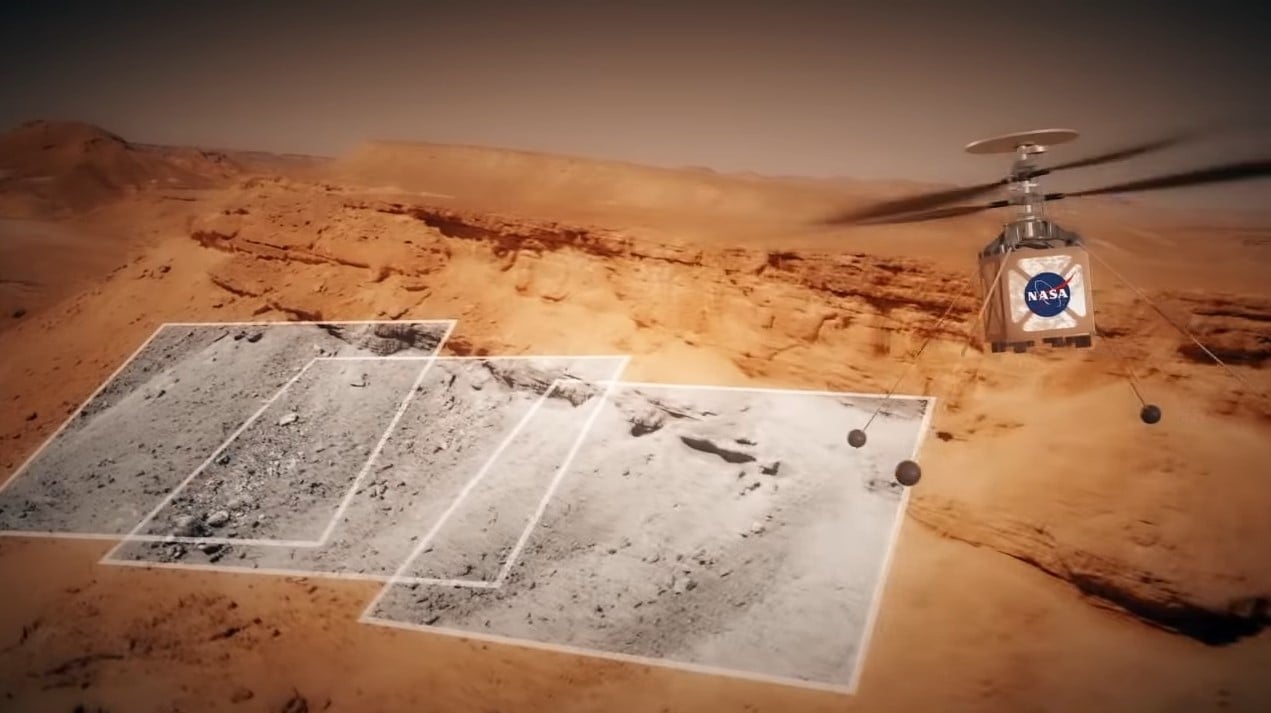A recent statement suggests that NASA will soon launch a Mars helicopter in order to get a better aerial view of the planet.
The launch of the Mars helicopter will help make up for sme of the drawbacks of heavier-than-air vehicles as we take steps to further explore the Red Planet. With an atmosphere that is 100 times thinner than what we see here on Earth, the ability to create a Mars helicopter was a massive undertaking – but NASA has been working towards this goal in one capacity or another since 2013, making changes as needed in order to produce a craft that will get the job done.
According to Mimi Aung, the Mars Helicopter project manager at JPL, in a recent statement, “The altitude record for a helicopter flying here on Earth is about 40,000 feet. The atmosphere of Mars is only one percent that of Earth, so when our helicopter is on the Martian surface, it’s already at the Earth equivalent of 100,000 feet up.”
“To make it fly at that low atmospheric density, we had to scrutinize everything, make it as light as possible while being as strong and as powerful as it can possibly be.”
Despite taking steps in order to ensure we have a Mars helicopter that is light as possible, the team has managed to develop a fuselage that is as small as a softball and with a weight of just a few kilograms while maintaining incredible power and durability.
The Mars helicopter is capable of whirling 3000 whirls per minute which is roughly 10 times the rate of helicopters we use regularly here in Earth – ensuring a seamless flight despite the massively different conditions on Mars when compared to flight launches on our own planet.
In addition to packing in a huge amount of power into a small and unassuming body, the Mars helicopter is equipped with solar cells that will allow it to charge itself with sunlight as well as a built-in hearing instrument to keep it running seamlessly on cold Martian nights.
Knowing what the Mars helicopter is capable of is all well and good, but we won’t get an accurate idea of how the craft functions until we see it deployed on the Red Planet itself – a goal which NASA will likely achieve sooner rather than later. The Mars helicopter is currently set to be attached to the belly of the 2020 Mars rover – adding extra capabilities to the successor of the massively successful Curiosity rover.
Once the Mars rover makes it to a site that it suitable for takeoff, the Mars helicopter will detach and scientists at NASA will be able to send out commands that will allow the chopper to perform initial tests before taking to the skies.
“We don’t have a pilot and Earth will be several light minutes away, so there is no way to joystick this mission in real time,” Aung stated while stressing on the importance of autonomy for the upcoming Mars helicopter launch.
The current plan is for the Mars helicopter to perform five flights over a period of around 30 days, with each successive flight increasing the distance up to an eventual length of 90 seconds and several hundred meters. If this Mars helicopter launch works as planned, we may soon have our hands on a brand new way to explore the surface of foreign planets.
“Though the agency already has an orbiter lurking in space, it is way high up. The new Mars Helicopter will serve as a low-flying scout and could pave a way for similar missions that might provide access to hard-to-reach regions on Martian surface. The ability to see clearly what lies beyond the next hill is crucial for future explorers,” Thomas Zurbuchen, associate administrator for NASA’s Science Mission Directorate, said in the statement.
“We already have great views of Mars from the surface as well as from orbit. With the added dimension of a bird’s-eye view from a ‘marscopter,’ we can only imagine what future missions will achieve.”
It’s important to note that, while this is uncharted territory for the space agency, any failings of the Mars helicopter when we move into the 2020 launch will not have any effect on the actual performance of the rover itself – ensuring that we have valuable data sent back to Earth no matter the outcome of this ambitious project.





